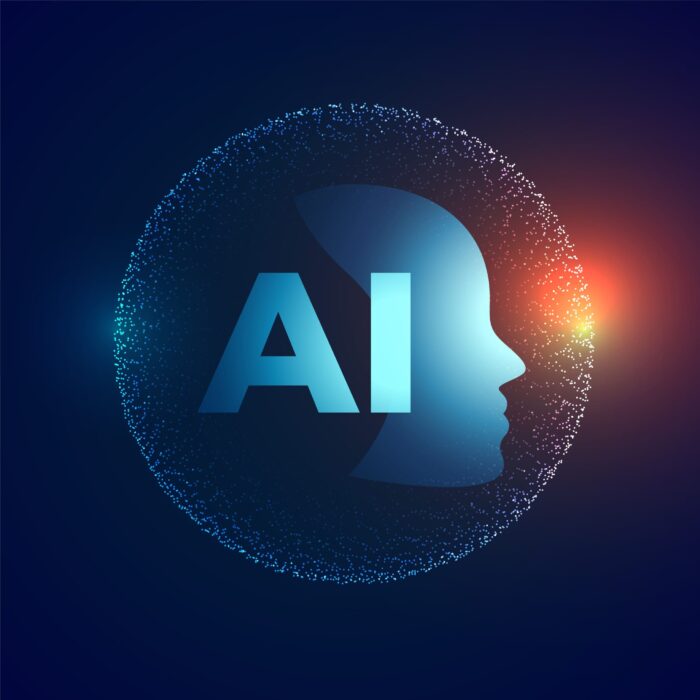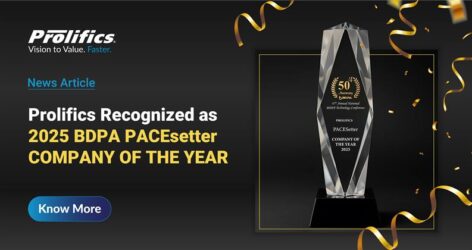Industry-Leading AI Expertise for Smarter, Faster Growth
Leverage Prolifics’ AI consulting services to transform your industry. From healthcare to finance, retail to manufacturing, our custom AI solutions for business enhance efficiency, decision-making, and customer experiences—driving measurable AI-powered business transformation.
Our experts help enterprises harness AI-driven digital transformation, data-driven decision-making with AI, and the emerging capabilities of Agentic AI to stay competitive in a rapidly evolving market. Wondering, what are the best AI consulting services for enterprises? This is where we start.

Industry-Focused Solutions Powered by Innovation, Data, and Expertise
Drive business transformation with AI through Prolifics’ industry-specific AI solutions for sectors like Banking, Financial Services, Healthcare, Retail, Manufacturing, and more. Our AI-driven digital transformation approach—rooted in data and automation—helps you streamline operations, boost performance, and stay ahead in today’s dynamic market. Want to know how to implement AI across business operations? Let us guide you.
For over 45 years, Prolifics has delivered transformative artificial intelligence solutions that create measurable business impact.
With a global team of 2,000+ experts across 10 strategic locations, we provide world-class custom AI solutions for business tailored to your needs. Trusted by more than 150 Fortune 1000 companies, we are committed to driving innovation, reliability, and excellence.
Innovation with Impact
Customer-Centric Collaboration
Excellence through Expertise
Generative AI Solutions that Power Smarter Business Transformation
Prolifics leverages Generative AI for business growth to revolutionize your operations with hyper-personalized customer experiences, optimized resource management, and data-driven decision-making with AI. Our custom AI solutions for business seamlessly integrate into your systems, automating complex decisions while ensuring data privacy, security, and AI and data governance. We even deploy Agentic AI to support intelligent decision loops in real-time. Partner with Prolifics to unlock generative AI solutions for customer experience and gain a lasting competitive edge.
AI-Powered Expertise Transforming Innovation into Impact
Data & AI
Quality Engineering & Assurance
Integration & Platform Engineering

Enterprise Platforms
Intelligent Automation & Applications
Emerging Technology
Driving Measurable Business Success
Our global team of 2,000+ experts, located across 10 strategic hubs, delivers AI consulting services and custom AI solutions with unmatched speed and scale. Trusted by over 150 Fortune 1000 companies, we combine reliability, innovation, and deep expertise to support sustainable, AI-powered business transformation.
We empower enterprises through AI-driven digital transformation and data-driven decision-making with AI to fuel long-term growth and resilience. Recognized among the top AI firms for digital transformation, we guide clients at every step of their journey. Whether you’re modernizing legacy systems or expanding your analytics, we help you understand what are the best AI consulting services for enterprises—and how to make them work for your business.
Digital Transformation
At Prolifics, we leverage AI-driven digital transformation through a structured, outcome-focused consulting approach that ensures strategic alignment, accelerates innovation, and optimizes operational performance. As more enterprises ask, how to implement AI across business operations, our proven frameworks and expert guidance deliver clarity, speed, and measurable impact. innovation, and optimizes operational performance.
Intelligent Data Engineering & Generative AI for Enterprise Acceleration
Prolifics’ data engineering and analytics solutions help enterprises become intelligent, connected, and future-ready. We leverage modern data architectures, advanced analytics, and generative AI for business to unify data, accelerate innovation, and drive AI-powered business growth.
Our scalable, real-time solutions support data-driven decision-making with AI, seamless integration, and operational agility. From automating insights to enhancing customer experience, Prolifics transforms your data into a strategic growth engine. Generative AI solutions for customer experience are at the heart of this transformation, helping you deliver personalized, intelligent interactions at scale. Unlock the future of your enterprise with AI consulting services–powered data engineering, analytics, and AI integration services that adapt as your business evolves.

Prolifics
Where Innovation Meets Expertise
Our Key Partnerships
We partner with the world’s leading technology providers to blend cutting-edge platforms with our AI Consulting Services, engineering, and broader consulting expertise. These strategic alliances enable us to deliver innovative, scalable AI-powered Automation and Custom AI Solutions that drive business transformation, foster growth, and keep our clients ahead in today’s rapidly evolving digital landscape. Recognizing the need for future-ready insights, our ecosystem also supports next-gen business analytics—combining real-time data, enterprise intelligence, and automation to drive smarter, faster decisions.

















